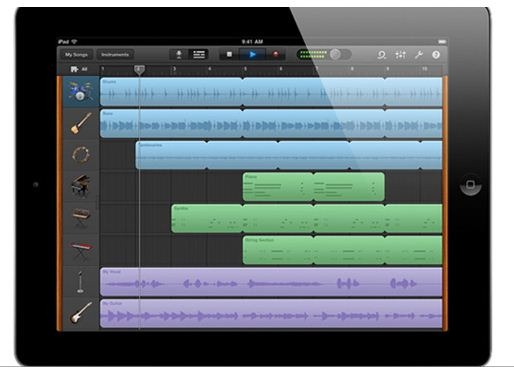
For example, if you want to adjust an organ’s effects or draw bar settings, tap on the Effects button at the top of the screen and the effect pane rolls down from the top of the screen. You also use a pop-over menu in the iPhone/iPod touch version to adjust instrument parameters that are normally found on the main screen in the iPad version. Organ Effects: The Effects pop-over menu provides access to effect controls such as these organ drawbars. Should you wish to play with track, section, or song settings, tap the Tools pop-over menu in the top-right corner, and in the resulting screen tap the Track, Sections, or Song tab to be taken to the corresponding screen. When within the Keyboard, Drums, Guitar Amp, Smart Drums, Smart Bass, Smart Keyboard, or Smart Guitar screen, you use this same pop-over menu to choose instruments sounds or, in the case of Guitar Amp, another amp model. For example, to travel to the My Songs or Instruments screens, simply tap the downward-pointing triangle at the top-left of the display and choose the function you desire. Apple has cleverly redesigned the interface for the iPhone and iPod touch so that you use pop-over menus and tabs to select the functions you need. After all, the app demands not only that you be able to view multiple tracks (in the iPhone/iPod touch implementation you can see four tracks at once), but also muck around with settings screens and configure and play instruments. What I can do is provide a bit more perspective on how these features can help musical newbies as well as those with more sonic seasoning.Īt first blush, it’s hard to imagine how GarageBand could work on any iOS device other than an iPad.

My colleague, Serenity Caldwell, has taken an admirable first look at GarageBand 1.1 and many of its new features, so I needn’t repeat her efforts.


 0 kommentar(er)
0 kommentar(er)
